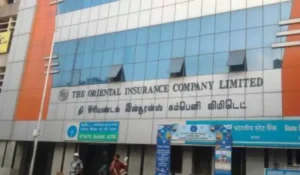
The upcoming important exams are NABARD grade A and grade B, in which there is a section of Economic & Social Issues (with focus on Rural India) wherein 40 questions will be there carrying 40 marks. So, for the same, it becomes really important to have an in-depth knowledge of the Indian Economy covering topics such as Inflation, Poverty Alleviation and Employment Generation, Industrial and Labour Policy, Social Structure in India etc. Further its imperative to be aware of the Programmes and Schemes taken up by the government to counter the issues arising. To help you with this, today, we are providing you with all necessary information related to the mentioned field which will help you to fetch some good marks. This is the Fourth and Final part of the Study Note Series which would be covering Poverty Alleviation portion.
Housing for All: Rural and Urban
In the 2015-16 Budget, govt. committed to the provision of housing for all by 2022. This would require completion of 3 crore houses in rural areas and 2 crore houses in urban areas. Key programs devoted to rural and urban housing were Indira Awas Yojana (IAY) and Rajiv Awas Yojana (RAY). These have now been made part of the program Housing for All (Rural and Urban).
IAY has been folded into the new mission called Housing for All and is to be funded as per the changed Centre-State funding pattern.
Rajiv Awas Yojana (RAY) aimed at achieving slum-free India was launched in 2011 as a Centrally Sponsored Scheme. It mandated assignment of lease rights to slum dwellers that could be mortgaged, renewed and inherited.
The present government has decided to discontinue RAY and subsume liabilities created under approved on-going projects, where work on ground has been started, in the new mission on Housing for All.
Govt. intends to provide pucca housing for every family by the 75th year of Independence (2022). It also aims to provide these houses with basic amenities: water, sanitation, electricity and even broadband.
What are the new Approaches for Combating Poverty?
1. Jan Dhan Yojana, Aadhar and Mobile (JAM): Towards Cash Transfers
Two key instruments- Jan Dhan bank accounts under PMJDY and biometric identity cards under Aadhar- promise to revolutionize the anti-poverty programmes by replacing the current cumbersome and leaky distribution of benefits under various schemes by the Direct Benefit Transfers (DBT).
On 15th August 2014, PM Modi announced the Pradhan Mantri Jan Dhan Yojana, the biggest financial inclusion initiative in the world. He launched the scheme on 28th August 2014 across the country. India is also moving towards completion of the Aadhar project that aims to give a biometric identity to all Indians.
Under MGNREGA, direct transfers of wages have already begun taking place. The employer records employment of a worker in a central database using the Aadhar identity. This triggers a transfer of the wage payment from a central government account to the worker’s bank account.
Jan Dhan, Aadhar and mobile cum banking correspondent initiatives together provide a powerful platform to convert most of the existing transfers and subsidies into DBT.
2. Lifting the Five Poorest Families in Each Village Out of Poverty
As the Prime minister has suggested, each Gram Panchayat may be asked to identify five poorest families in the village and endeavour to lift them out of poverty. The BPL list prepared on the basis of SECC 2011 may be used for selecting these families. Once the families to be targeted are identified, the Gram Panchayat should ensure that they get benefits of all government programs meant for the poor and vulnerable section of the society like job to one family member under MGNREGA, subsidized food grain under NFSA, housing under Housing for All, free schooling under the Right to Education Act, access to health care services, drinking water and sanitation facilities and guaranteed opportunity for skill development. The eventual effort should be to ensure that the families become capable of earning and sustaining above-poverty level of income within five to seven years.
What are the Urban Poverty Alleviation Programmes?
Nehru Rozgar Yojana (NRY)
In order to alleviate the conditions of urban poor, a Centrally Sponsored programme – Nehru Rozgar Yojana – was launched at the end of the Seventh Five Year Plan (October 1989) with the objective of providing of employment to the urban unemployed and underemployed poor.
The NRY consisted of three schemes namely
(i) The Scheme of Urban Micro Enterprises (SUME)
(ii) The Scheme of Urban Wage Employment (SUWE) and
(iii) The Scheme of Housing and Shelter Upgradation (SHASU).
Urban Basic Services for the Poor (UBSP)
The UBSP Programme was implemented as a Centrally Sponsored Scheme during the Eighth Five Year Plan with the specific objectives of effective achievement of the social sector goals; community organisation, mobilisation and empowerment; and conference through sustainable support system. The expenditure on the Programme was being shared on a 60:40 basis between the Central and the State Governments and UTs (with legislatures).
Prime Minister’s Integrated Urban Poverty Eradication Programme (PM IUPEP) :
It was launched in November, 1995.
The PM IUPEP was a Rs.800 crore scheme approved for the period up to the year 2000. Programme was applicable to all Class II urban agglomerations with a population ranging between 50,000 and 1 lakh subject to the condition that elections to local bodies have been held.
The Programme was being implemented on a whole town/ project basis extending the coverage to all the targetted groups for recuring a visible impact.
Swarna Jayanti Shahari Rozgar Yojana (SJSRY):
During the Ninth Plan, it is proposed to launch the Swarna Jayanti Shahari Rozgar Yojana (SJSRY) and phase out NRY, PMIUPEP and UBSP.
The SJSRY is to be a Centrally Sponsored Scheme applicable to all the urban areas with expenditure to be shared in ratio 75:25 between the Centre and States/UTs.
The programme has become operational on December 1, 1997. This programme would have two sub-schemes, namely,
(i)UrbanSelf-Employment Programme and
(ii) Urban Wage Employment Programme.
a) The Urban Self Employment Programme (USEP):
This programme will have three distinct components:-
(i) Assistance to individual urban poor beneficiaries for setting up gainful self-employment ventures.
(ii) Assistance to groups of urban poor women for setting up gainful self-employment ventures. This sub-scheme may be called “The Scheme for Development of Women and Children in the Urban Areas (DWCUA)”.
(iii) Training of beneficiaries, potential beneficiaries and other persons associated with the urban employment programme for upgradation and acquisition of vocational and entrepreneurial skills.
b) The Urban Wage Employment Programme (UWEP):
This programme seeks to provide wage employment to beneficiaries living below the poverty line within the jurisdiction of urban local bodies by utilising their labour for construction of socially and economically useful public assets.
This programme will apply to urban local bodies, the population of which is less than 5 lakhs as per the 1991 Census.
For suggestions and queries kindly drop a mail at…
contact@bankersadda.com or gopal.anand@adda247.com
You may also like to Read:




 OICL AO Exam Analysis 2026, 10 January S...
OICL AO Exam Analysis 2026, 10 January S...
 Daily Current Affairs Quiz 10th January,...
Daily Current Affairs Quiz 10th January,...
 10th January, 2026 Current Affairs (Dail...
10th January, 2026 Current Affairs (Dail...








